WELCOME TO IMMANUEL
AT THE HEART OF THE FENISCOWLES AND PLEASINGTON COMMUNITY


SPR SIDNEY ALBERT LING
On Remembrance Sunday 2010 the address was given as a powerpoint presentation on the life of Sapper Sidney Albert Ling, whose memorial, placed by his parents, has been in Immanuel Church since he died in 1915. No-one in the Parish knew anything about Sidney or his family and so began the research on this young man of Feniscowles, who lived 100 years ago and about whom, and his family, all had been forgotten - or so we thought..................
This presentation was put together by our Group Scout Leader, Mr Sandy Woods to whom we are very grateful for this lovely piece of research into our Parish history
"Welcome to our church for today’s Service of Remembrance.
As part of this service we would like to tell you some thing about the people we are remembering. Obviously we could not hope to cover in any detail all of the people who have died in the service of our country so today we would like to concentrate on one person. Sapper Sidney Albert Ling, Royal Engineers.
Why would we pick on Bert as he was known? Well his name had been displayed in our church for the last ninety five years on a plaque on the left hand side. It was placed there by his parents after his death in 1915.

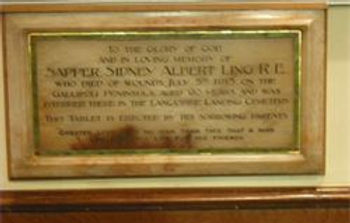
Who was he? His mother and father, Ellen and Walter, moved to Feniscowles about 1885, about 125 years ago. They had lived in Billingham in Norfolk and moved here as Walter and Uncle Sidney had got jobs in the Sun Paper mill.
The family first lived at 53 West Street , Livesey, and it was here that Bert was born. He was called after his uncle who had died a few months before Bert was born.
He had two brothers older than him, Fred and Walter and two sisters younger than him, Florence and Rose.



A few years later they moved to a new house, 61 Moulden Brow as Dad had now become a foreman at the mill. They latter moved to a house in Park View.
From here he went to school, which some of you older people might remember was the downstairs hall, where he was a bright lad and did well. Life was simple in those days and Feniscowles was still a small village with only a few hundred people living in it.
With Dad and elder brother Walter working in the mill just across the road, Mum staying at home to look after the family and Bert and his brothers and sister going to school just a 2 minute walk down the road.
They all attended Immanuel Church on a Sunday and again it was only a few minutes walk down the road.
At the age of 14 Bert left school and being a bright lad he got a job as an accounts clerk with the Great Northern Railway at Blackburn Railway Station.

He still didn’t have very far to travel to get to work as he would have got on the train at Feniscowles station.

At the age of 18 and looking for a bit of excitement in his life he joined the Territorial Army which had a base at Canterbury Street in Blackburn. The drill hall is still in use to this day. He joined the 42 Squadron Royal Engineers and became a signaler.
All the signalers where part of the Royal Engineers in those days as the Royal Signals had not been formed. Signaling methods used by the Signal Company in WW1 included flags, heliograph, lime-light lamps, dogs, carrier-pigeons, dispatch riders, buzzers and rockets, as well as various types of telegraph line and a small telephone exchange. Radios had not yet found their way into the army.
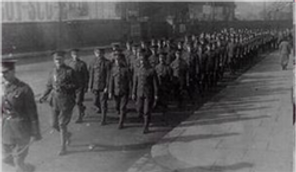
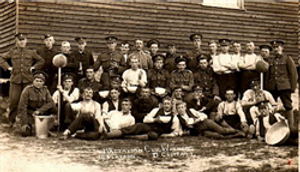
Not long after he had joined war was declared and on 5 August he was called up full time and the 42 Squadron became attached to the East Lancs Regiment.
Following build-up training (including three weeks under canvas on the Lancashire moors north of Manchester) the 15,000-man Division left Southampton to sail to Egypt on 10 September 1914. They were based at Cairo where further training took place.
For a 19 year old who had never been out of Lancashire what an adventure this would have been swapping green field and cows for sand and camels. Seeing the Sphinx and the pyramids would have been something out of a story book. However the adventure was soon to stop and the real war was to begin.
The division was sent to Gallipoli to take part in the invasion and hopefully capture of this area.
So where exactly is Gallipoli and why did Britain want to fight there?
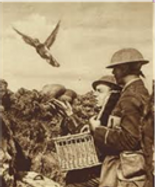


Gallipoli Expedition - 1915-16
Gallipoli is a peninsula that forms the northern side of the Dardanelles Straits, which is the channel of water that separates Greece from Turkey and connects the Mediterranean Sea with the Black Sea.
The campaign took place between April 1915 and January 1916.
The offensive’s aim was to push through the Dardanelles straits and capture Constantinople, the Turkish capital.
If the Allies could do this they could knock Turkey, which was on the German side, out of the war. They could then link up with the Russians who where also fighting the Germans. Both armies could then work together and attack the Germans from several sides at once.


If the Allies could do this they could knock Turkey, which was on the German side, out of the war. They could then link up with the Russians who where also fighting the Germans. Both armies could then work together and attack the Germans from several sides at once.
After a failed naval bombardment of the Turkish forts at the Dardanelles by the British and French navies it was decided that the capture of the Gallipoli peninsula should be done by land forces.
The forces chosen were: the British 29th Division and divisions from Australia and New Zealand know as the Anzac’s. The attack began on the 25 April 1915 and established two beachheads at Cape Helles and Gaba Tepe.
However, attempts to sweep across the peninsula ended in failure. By the end of August the Allies had lost over 40,000 men.

The Commander-in-Chief of the expedition asked for another 95,000 men, but although his request was supported by Winston Churchill, Lord Kitchener was unwilling to send more troops to the area.
On 14 October 1915, it was agreed that the 100,000 men already on the peninsula should be evacuated. The evacuation operation began at Sulva Bay on 7th December. The last of the men left Helles beaches on 9 January 1916.
About 480,000 Allied troops took part in the Gallipoli campaign. The British suffered 205,000 casualties of whom 43,000 died.
There were more than 33,600 ANZAC losses with over one-third killed and 47,000 French casualties of 5,000 died.
Turkish casualties were estimated at ¼ million men of whom some 65,000 died.
"No account of the landings at Gallipoli gives a true picture if it omits reference to the prevalence among these young troops of dysentery. To be thrown into battle for the first time on an unknown desert shore was a fierce enough ordeal for the vanguard of Kitchener's New Army. Yet these men were called upon to march, often in the clutches of a weakening disease. These were officers and men of whom our Corps may well be proud." ….The Times:
Anzac Day is a national day of remembrance in Australia and New Zealand, and is commemorated by both countries on 25 April every year to honour those men who fought at Gallipoli. It now more broadly commemorates all those who died and served in military operations for their countries. Anzac Day is also observed in the Cook Islands, Niue, Samoa and Tonga.

Bert landed with his Signal Company at Cape Helles in May 1915. The landing was the scene of fierce fighting against Turkish troops in muddy ravines subject to frequent artillery bombardment. The Signal Company quitted itself well and members won several awards for bravery under fire.
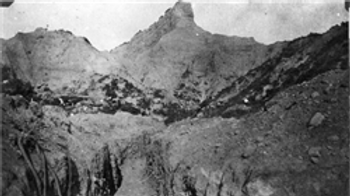
On 3 June 1915 whilst overhauling lines and extensions for a battle planned for 4 June, Bert’s Sergeant, CE Williams won the first Distinguished Conduct Medal awarded to the Signal Company. He was in charge of two strong parties laying cables along the Krithia Nullah, which was a main communication route in a ravine. All day long the enemy had shelled the route which was congested with all kinds of traffic. One of the working parties was caught by two salvoes which killed two men, wounded another, smashed-up cable-barrows and wounded a horse. Sergeant Williams, with splendid courage and determination re-organized his men, and by force of personal example carried-on and finished the job. The wounded man was Bert and he was taken to the field hospital near the beach. From here we know that he had written letters home and his mother received his last on on the 4 July. However he died from his wounds on the 5 July 1915 and is buried in Lancashire Landing Cemetery.
His Grave Reference number is D.71.


A few weeks after Bert's death, his aunt Ellen wrote and published this poem in the Blackburn Telegraph - Ellen, we found, is still remembered in Feniscowles for her poetry and as a Sunday School teacher and continued to attend Immanuel up to her death in the early 1950's

If anyone reading this has any further information about the Ling family, the vicar, David would be delighted to hear about it, please email David on
